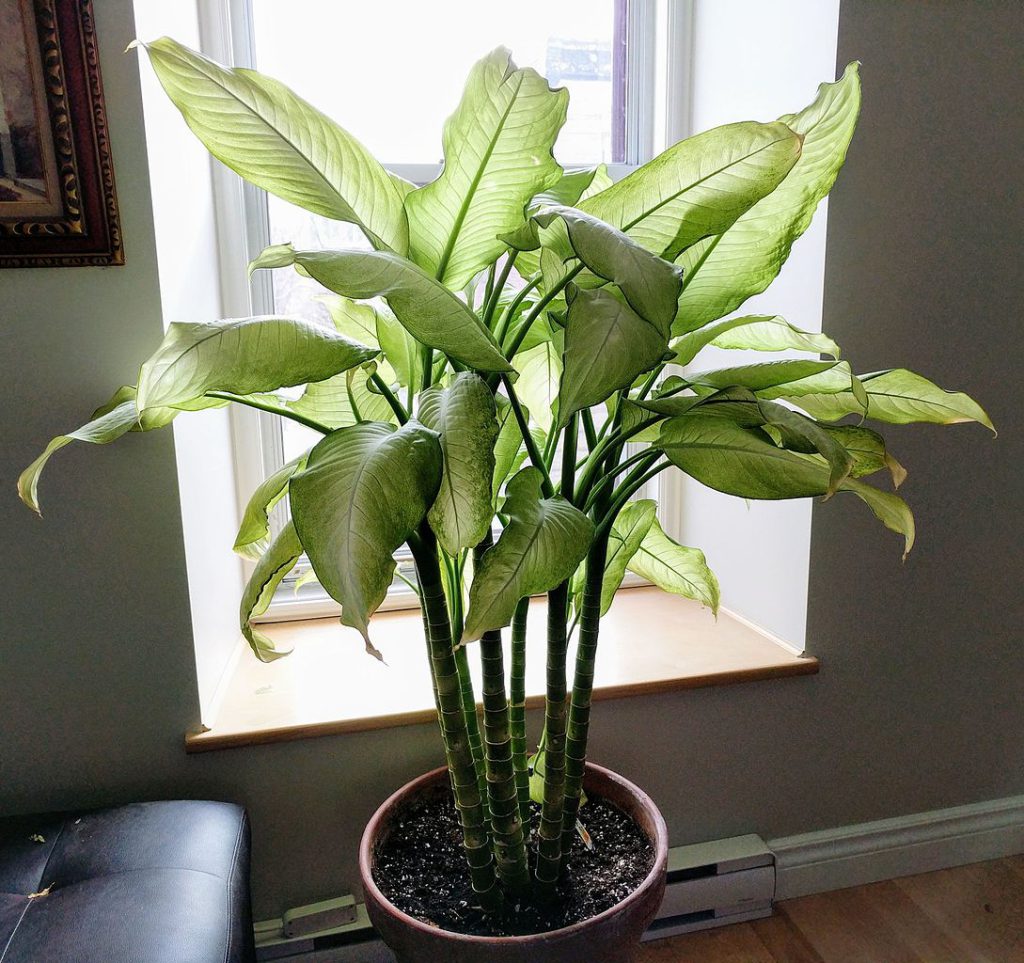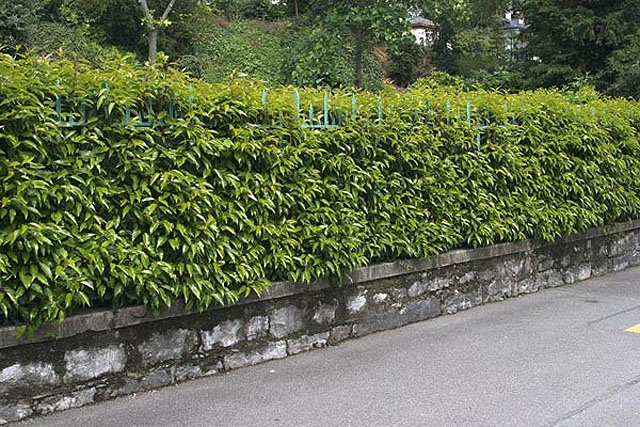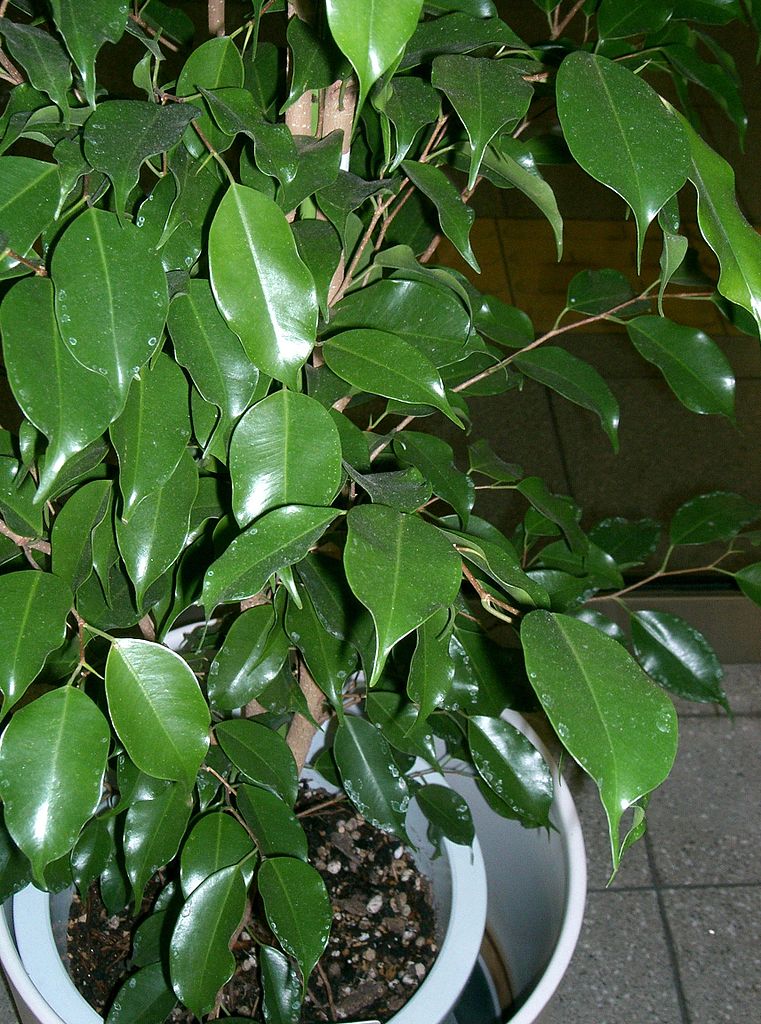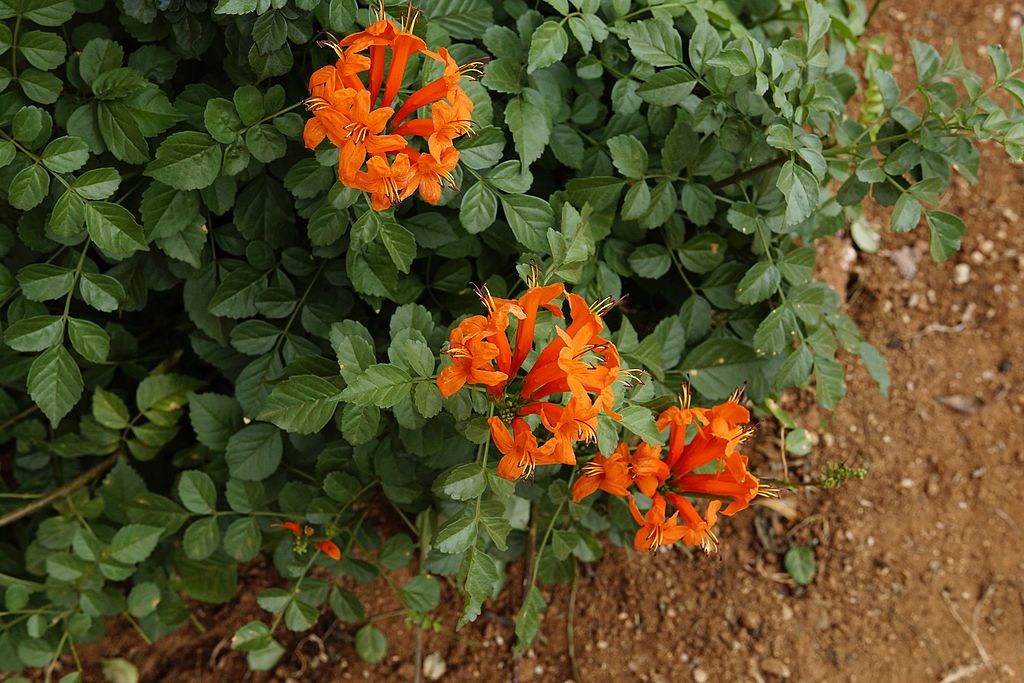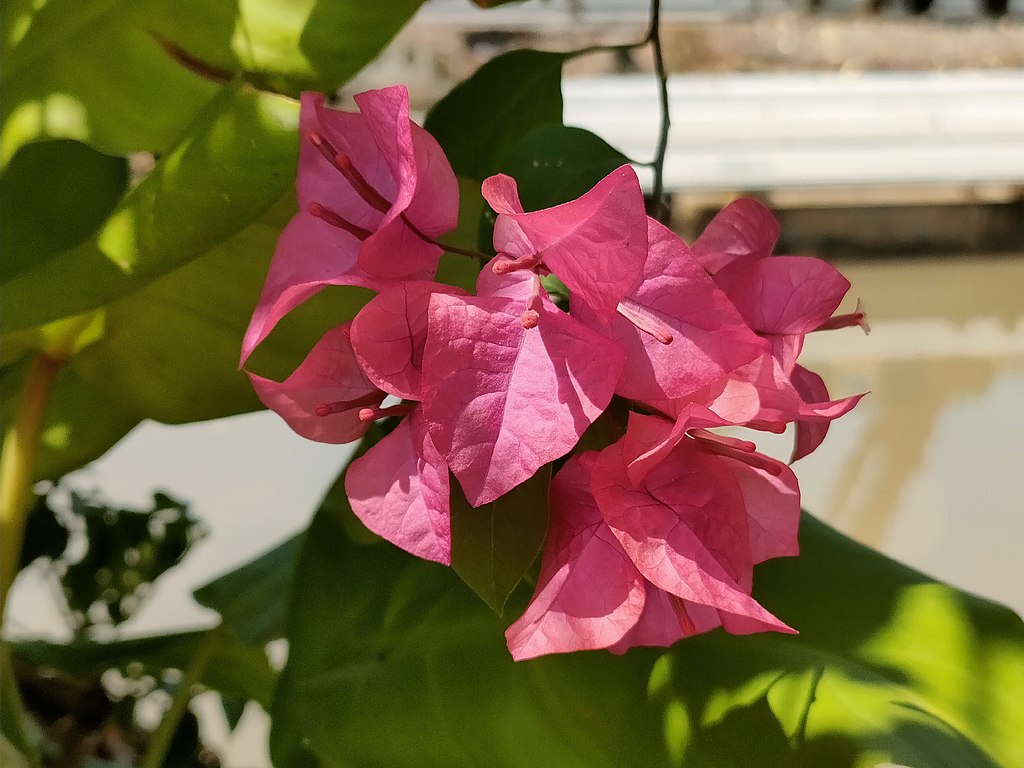Dieffenbachia is a fast-growing plant that can achieve 60 centimeters in height within a year of planting a rooted cutting, provided it gets enough light. It got the name “dumb cane” because the plant contains toxins in all of its parts (including its roots and sap) that, if it is in contact near the face or ingested, it can inhibit speech. It is highly toxic to humans, dogs, and cats.
Dieffenbachia is a genus of tropical perennials with several species that are commonly grown as houseplants. It is a lush and showy plant from the tropics of Mexico, South America, and the West Indies.
A large, dieffenbachia can reach 3 meters, with leaves 50 centimeters long. However, in typical indoor conditions, the plants will rarely reach this size where 1.0 to 1.5 meters is more common.
Dieffenbachia will thrive in a spot that receives bright ambient light, but direct sun will scorch the leaves. In an office space, the Dieffenbachia can adapt to fluorescent lighting, though it may take some time to adjust.
Dieffenbachia Care
Dieffenbachia is best grown as an indoor plant in bright, indirect sunlight. Plant it in fertile, well-drained potting soil with a high peat content. As a tropical plant, it will do best in high humidity. One way to provide this is to place the pot on a tray of pebbles filled with water. Misting the leaves can help during the dry winter months.
Problems with dieffenbachia plant can be easily overcome in most situations. The most common problem with growing dumbcane dieffenbachia, like many indoor houseplants, is too much moisture. Overwatering is a common problem with this plant. Check the soil to make sure it is dry 2.5-4.0 centimeters down before watering the dieffenbachia plant.
Lighting conditions
When growing dieffenbachia, most varieties do best in a filtered light situation, where bright to moderate light shines through a sheer curtain or other filtering window cover. Filtered light is particularly important in the spring and summer, when the dieffenbachia houseplant is producing new, tender leaves that are subject to sunburn if the light is too bright or shines directly on the plant. Rotate the dieffenbachia houseplant regularly to provide adequate light to all sides of the plant and prevent it from reaching toward the light on one side.
Planting outdoors dieffenbachia
If you live in a warm climate, plant dieffenbachia outdoors in your shade garden where it can enjoy a little dappled light. Plant outdoors in the early spring and water twice a week until the end of summer and early fall. If you are planting more than one dieffenbachia in a garden, give them plenty of space (more than 1.5-2.0 meters) as the plant can grow tall and wide.
Planting indoors dieffenbachia
When planting indoors, consider placing the dieffenbachia plant in a naturally humid area, like a bathroom or kitchen, where it will thrive. If you place the plant in a dry area of your home, consider misting it or putting it on a rock tray filled with water that will naturally evaporate and create humidity around the plant.
Soil
Dieffenbachia prefer soil that is consistently and lightly moist, but not soggy.
Use a fast-draining, well-aerated potting mix. Make sure drainage is good to avoid damaging the roots; they should never be left in soggy soil.
Water
During the growing season, dieffenbachias like regular moisture and do not want to dry out. A large dieffenbachia might need to be watered twice a week. In the winter, you can cut back on the water. At the same time, it’s important not to overwater a dieffenbachia, which can cause rot problems. Make sure the top of the soil is fully dried out before watering.
Temperature and humidity
This plant likes fairly warm conditions, from 18 degrees to 24 degrees Celsius. If the temperature drops below 15 degrees Celsius or if the plant is exposed to cold drafts, it is likely to lose lower leaves and assume a palm-like appearance. The plant appreciates high humidity.
Fertilizer
For best results, fertilize every four to six weeks with a balanced, diluted fertilizer, such as a 20-20-20. Consult product label instructions for the amount to use.
Pruning dieffenbachia
A dieffenbachia plant usually requires pruning when it’s too tall and there seem to be few leaves on the lower part of the stem. With a sterilized, sharp cutting tool, prune the plant down to size from the top to trigger new growth.
Do not treat carelessly the leaves you cut. If chewed or eaten, can cause temporary swelling of the tongue and throat, leading to a temporary loss of speech and the common plant name of dumbcane. While this is usually not serious, it can cause suffocation. Avoid placing the dumbcane plant or throwing the leaves where curious children or pets might be tempted to taste it.
Greek name: Ντιεφενμπάχια.
Sources: https://www.valentine.gr/dieffenbachia_gr.php, https://www.thespruce.com/dumb-cane-dieffenbachia-definition-1902751, https://www.gardeningknowhow.com/houseplants/dumb-cane/growing-dumbcane-dieffenbachia.htm, https://greeneryunlimited.co/blogs/plant-care/dieffenbachia-care
Tags: ORNAMENTAL PLANTS

